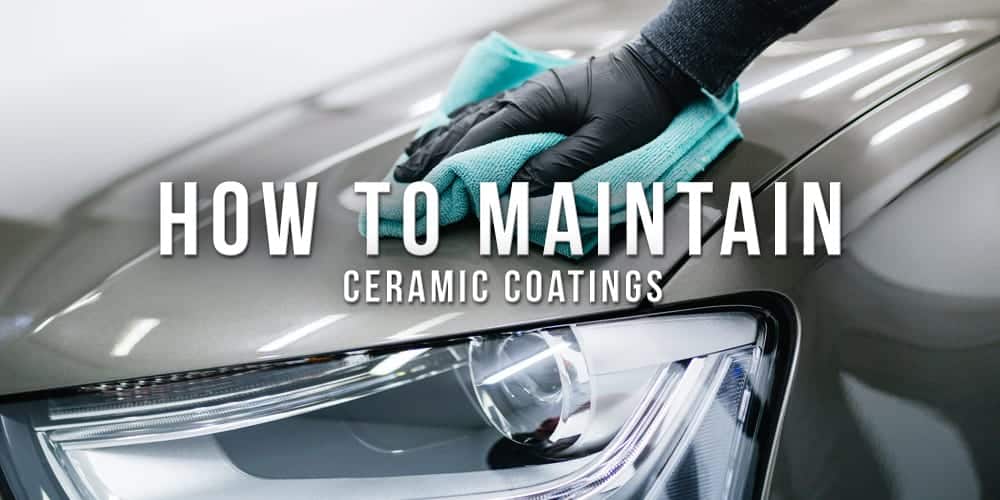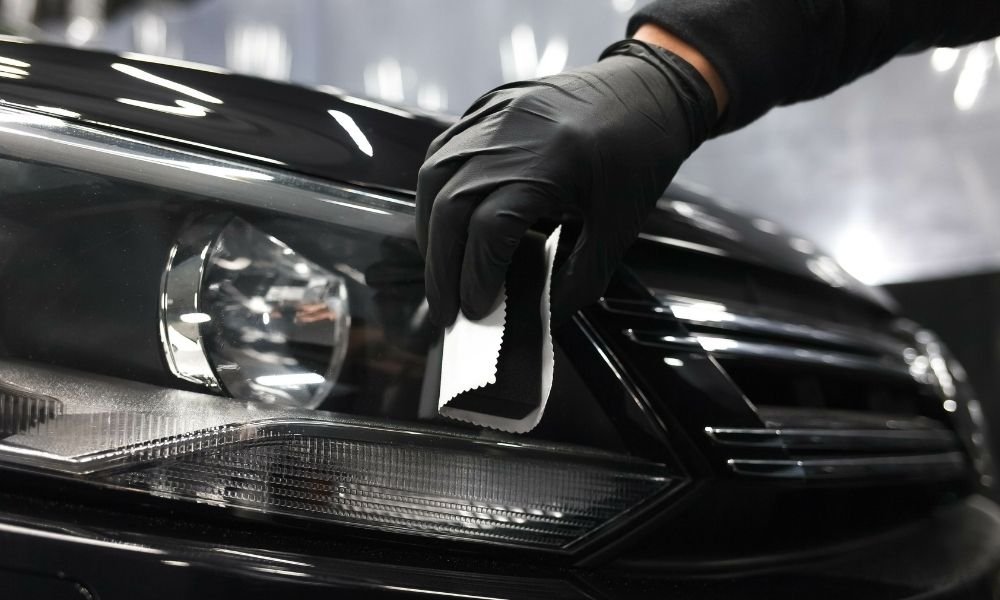Final Touch Auto Works Ceramic Coatings and the Secret to Scratch Resistance
Final Touch Auto Works Ceramic Coatings and the Secret to Scratch Resistance
Blog Article
The Ultimate Overview to Ceramic Coatings: Enhancing Your Car's Finish and Longevity
If you're seeking to boost your car's appearance and protection, ceramic coatings might be the service you've been looking for. These sophisticated finishes bond with your automobile's paint, creating a durable obstacle against ecological damage. Exactly how do they pile up against typical wax? Comprehending the benefits and application process can make a substantial difference in your vehicle treatment regimen. Allow's explore what makes ceramic finishes a worthwhile investment for your car.
What Are Ceramic Coatings?
Ceramic layers are sophisticated safety layers that boost your automobile's exterior. They're made from a liquid polymer that chemically bonds with your automobile's paint, creating a resilient shield. Unlike traditional wax or sealants, which diminish gradually, ceramic finishes give lasting security versus environmental pollutants like UV rays, dust, and chemicals.When you apply a ceramic covering, you're purchasing a barrier that wards off water, making it simpler to cleanse your automobile and keeping it looking more recent for longer. This innovation aids protect the integrity of your paint, lowering the danger of scratches and oxidation.Ceramic coverings come in various solutions, each created to deal with different demands and preferences. You can pick a DIY set or opt for expert application, depending upon your comfort degree and spending plan. In general, ceramic finishings represent an advanced remedy for keeping your automobile's aesthetic allure and durability.
Advantages of Ceramic Coatings
You reveal an array of advantages that go past plain aesthetics when you spend in a ceramic coating. To start with, it provides remarkable security against environmental pollutants like dirt, bird droppings, and UV rays, maintaining your vehicle's paint looking brand-new much longer. You'll notice that upkeep becomes simpler, as the hydrophobic homes trigger water and gunk to move off effortlessly. This implies less time spent cleaning and describing your vehicle.Additionally, ceramic coatings can boost the glossiness of your automobile's finish, offering it that showroom sparkle. They also use resistance to scratches and swirl marks, which helps preserve your lorry's resale value. With a ceramic coating, you're not simply safeguarding your investment; you're also improving its overall appearance and durability. Ultimately, this advanced modern technology guarantees your cars and truck stands out while taking pleasure in long-term advantages that traditional waxes simply can't match.
The Application Process: How to Apply Ceramic Coatings
Applying a ceramic covering includes numerous essential steps to ensure excellent results. Completely clean your car to eliminate any kind of dirt, gunk, or pollutants. This guarantees the surface area is all set and tidy for the covering. Next, decontaminate the paint using a clay bar to remove ingrained bits. Afterward, inspect the paint for imperfections and polish it to achieve a smooth surface.Once your auto's surface area is prepped, apply the ceramic covering in little areas. Utilize an applicator pad to spread the finish equally, complying with the maker's directions. Permit the finishing to treat for the advised time, generally between one to two hours, depending upon the product.Finally, prevent washing your auto for a minimum of a week to allow the covering bond effectively. Following these steps will certainly assist you accomplish a resilient, high-gloss coating that protects your auto for years to come.

Contrasting Ceramic Coatings to Typical Wax
After guaranteeing your auto's surface area is perfectly prepped with a ceramic coating, it's time to consider how this modern solution compares to typical wax. Ceramic finishings give a durable layer of protection that lasts for many years, while wax typically provides just a couple of weeks of shine. You'll discover that ceramic finishes bond with your paint, creating a hydrophobic surface that wards off water and dust, making maintenance easier.In contrast, conventional wax sits on top of the paint and needs constant reapplication. With ceramic finishings, you get exceptional scrape resistance and UV defense, helping to avoid fading and oxidation. While the initial financial investment for a ceramic finish is greater, the lasting benefits frequently surpass the prices. If you're looking for toughness and enhanced gloss, ceramic finishes are a clever choice over standard wax.
Maintenance Tips for Your Ceramic Coated Lorry
To keep your ceramic-coated vehicle looking pristine, regular maintenance is crucial. Beginning with a gentle clean using a pH-balanced hair shampoo; prevent extreme detergents that can break down the layer. Make use of a microfiber wash glove to stop scratches and always wash completely to eliminate any soap residue.After cleaning, completely dry your vehicle with a soft microfiber towel to stay clear of water areas. Think about using a ceramic upkeep spray every couple of months to boost the covering's hydrophobic homes and include an additional layer of protection.It's also a good idea to stay clear of automatic vehicle washes with abrasive brushes, as they can damage the finish. Rather, choose hand cleans or touchless laundry options. Additionally, on a regular basis check your car for impurities like tree sap or bird droppings and address them immediately to stop etching. Adhering to these suggestions will certainly help keep the sparkle and longevity of your ceramic-coated vehicle for years ahead.
Usual Myths Regarding Ceramic Coatings
Despite the impressive advantages of ceramic layers, numerous misconceptions can create confusion for vehicle owners. One typical false impression is that ceramic layers get rid of the requirement for maintenance. While they do supply improved protection, normal washing and treatment are still necessary to preserve that high-gloss finish.Another misconception is that these coatings are scratch-proof. While they offer a strong layer of defense versus minor scrapes, they can not withstand extreme effects or unpleasant materials.Many additionally think that ceramic coverings will certainly make their automobiles unsusceptible to all impurities. Actually, they ward off dust and water but will not prevent problems like bird droppings or tree sap from causing damages if left unattended.Lastly, some assume that applying ceramic layers is a do it yourself job anybody can take care of, yet achieving a perfect application frequently requires expert her comment is here expertise to guarantee peak results.
Selecting the Right Ceramic Covering for Your Vehicle
How do you select the ideal ceramic finishing for your cars and truck? Begin by taking into consideration the level of defense you require. If your vehicle deals with harsh climate or regular journey, choose for a premium finish that offers superior durability and resistance to scratches, UV rays, and chemical stains.Next, think of the application technique. Some finishes call for professional installment, while others are DIY-friendly. If you're experienced, a do it yourself product may conserve you cash, however, for the most effective outcomes, a professional can assure correct application.Don' t fail to remember to check the longevity of the covering. Some last a few years, while others can protect for a years or more. Ultimately, review reviews and endorsements to gauge customer satisfaction. By considering these elements, you'll locate a ceramic finishing that not just boosts your automobile's look yet likewise supplies resilient defense.
Frequently Asked Concerns
How Much Time Do Ceramic Coatings Last typically?
Ceramic finishes generally last anywhere from two to 5 years, relying on elements like application, upkeep, and environmental conditions. You'll desire to adhere to appropriate care regimens to maximize their long life and efficiency.
Can Porcelain Coatings Be Applied Over Paint Scratches?
You can't use ceramic finishings over paint scratches properly. It's finest to repair any kind of scratches initially, making sure a smooth surface area - Final Touch Auto Works Ceramic Coatings. In this manner, the layer bonds correctly and why not try this out offers excellent security for your lorry's surface
Are Ceramic Coatings Safe for All Car Surface areas?
Ceramic layers are usually secure for many car surface areas, including paint, glass, and wheels. It is important to check details item standards, as some layers may not be appropriate for particular products or coatings.
Will Ceramic Coatings Protect Versus UV Damage?

Can I Do Touch-Ups on Ceramic Layered Surfaces?
You can do touch-ups on ceramic covered surface areas, however it's important to make use of suitable items. Confirm the location is tidy and comply with proper application strategies to preserve the layer's stability and performance. Unlike typical wax or sealants, which put on off over time, ceramic coatings supply long-lasting protection against environmental contaminants like UV rays, dust, and chemicals.When you use a ceramic finish, you're investing in a barrier that fends off water, making it simpler to clean your vehicle and keeping it looking newer for longer (Final Touch Auto Works Ceramic Coatings). Later, check the paint for blemishes and polish it to attain a smooth surface.Once your car's surface is prepped, use the ceramic finishing in tiny areas. Allow the finish to treat for the recommended time, usually between one to two hours, depending on the product.Finally, avoid cleaning your vehicle for at the very least a week Discover More to let the layer bond correctly. Take into consideration using a ceramic upkeep spray every few months to improve the finish's hydrophobic residential properties and add an added layer of protection.It's additionally sensible to prevent automatic cars and truck washes with unpleasant brushes, as they can harm the covering. Ceramic finishings are usually safe for the majority of automobile surfaces, including paint, glass, and wheels
Report this page